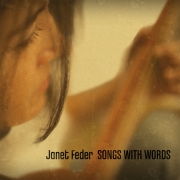For 3d imaging and accurate timbre of acoustic instruments , it's tough to beat the early seventies 20th century and avant-garde classical recordings on the Nonesuch label. What is really amazing is that these were budget label recordings, but the sound quality is really exceptional.
The series was called "Spectrum New American Music". I'm not entirely sure how many were in the series. The music on most of these is pretty 'prickly' and atonal, so, YMMV.
All the covers had a similar look, like this:
View attachment 20721
A few months ago, after a meeting of the LA and OC Audio Society, I asked Peter McGrath about this series of recordings, and his eyes lit up. Before I even finished, he interjected that he owns every one, and they are prized in his collection.
As it turns out, the recording engineer on these was Peter McGrath's mentor. After talking a bit about these recordings, and how they are just simply 'right', no audiophile fireworks, not crowded with too many mics, or close mic'd for super detail. Peter made a comment like, "Yeah, these recordings are a real indictment on modern recording methods".
I also really like most of the ECM jazz recordings, the 70's release on vinyl (that ECM vinyl was super quiet), and the newer releases.
They seem to understand that their audience, while maybe not all audiophiles, still want great sound quality.
They are loaded with natural dynamics. They sound intimate, yet with still a lot of space around the instruments. They really excelled at recording drums and percussion. Again, no audiophile fireworks. just real musicians, recorded in a real space.
Some of the standouts are: Eberhard Weber - Colours of Chloe, Kenny Wheeler - Gnu High, Ralph Towner - Old Friends, New Friends, Art Lande and Rubisa Patrol - Desert Patrol, Art Ensemble of Chicago - Full Force, and of course, Keith Jarrett, Metheny, Dave Holland, Bare Philips, and many more.
I also like Reference Recordings quite a bit. As already mentioned, the The Concord Chamber Music Society:''Danza del Soul'' is very good.
Their Stravinsky recording with the Minnesota Orchestra is really good. Not only is it a great recording, it's a testament to the quality of less than big city orchestras.
Same with their "Pictures at an Exhibition".








